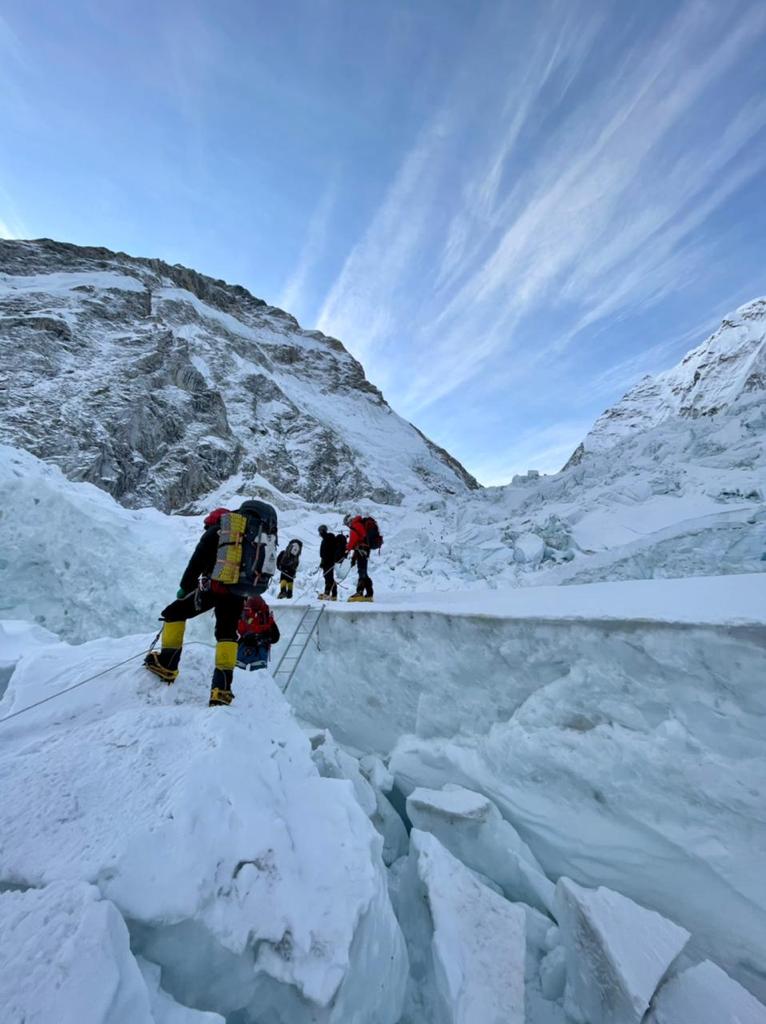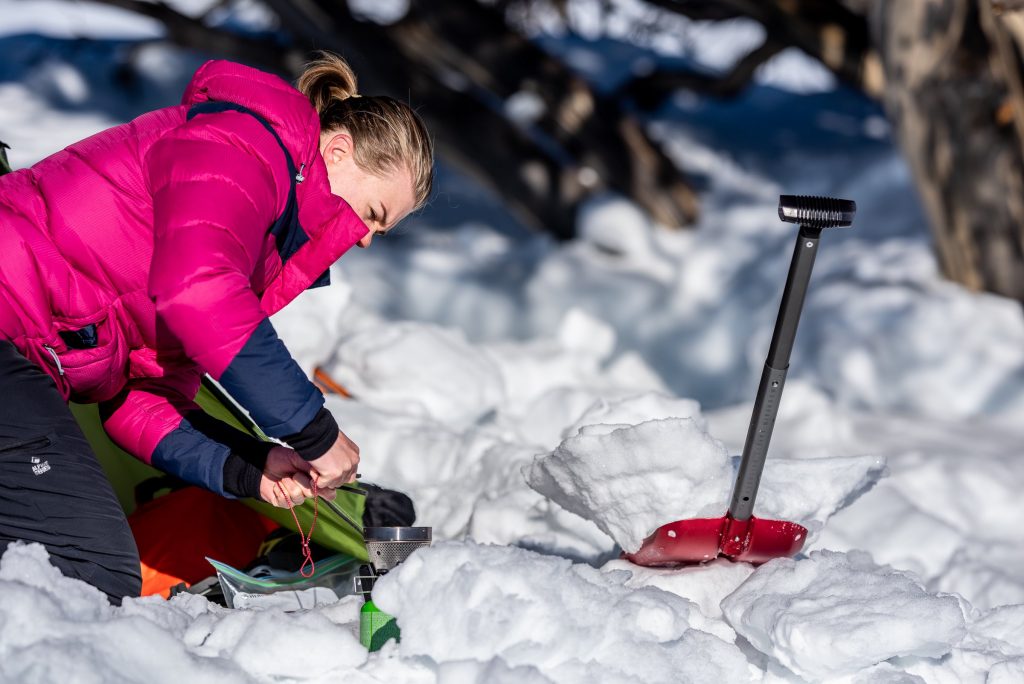A Mountain Guide’s Gear Tips – CTSS Guide Robert Jantzen
Don’t just trust everything you read about mountaineering online! Get a mountain guide’s gear tips straight from the source. CTSS Guide Robert Jantzen offers up his best advice for your next trek into the mountains.
Shin-Bang & How to Prevent It
Shin-bang is a bone bruise that forms on the front of your tibia, or shin, from repeatedly impacting the front of your climbing boot as you walk. Unlike blisters, which can be dealt with fairly easily, shin-bang is much harder to manage once it’s set in therefore, of course, prevention is key!
Shin-bang usually comes from the boot being too restrictive of the natural forward and back movement of your ankle while walking. With that in mind, we have found working with your lacing system to be a very successful solution. If you can find a way to keep the boot lightly tight around your forefoot/mid-foot, but loose around your ankle, shin-bang should be less of an issue.
It may feel odd at first to have such a loose system, but over time you become accustomed to it. This was the solution climbers used to use all the time when plastic boots were the best on the market – times/gear have changed, but the technique still applies!

How to Pick the Right Crampons
I need crampons, which one is the right one?
Quite simply, a standard 12 point steel crampon is your best overall bet. This one tool can be used for 90% of mountaineering objectives. We have had excellent success with the Petzl Vasak crampon on expeditions from Mt. Baker to Mt. Everest, and the Black Diamond Sabertooth or Grivel G12 have been very good as well.
We recommend going with a model that has a heel lever and a plastic toe bail for the attachment setup, you may see these referred to as ‘semi-automatic’ or ‘Lever-lock Universal’. If you have large feet (US size 12 and up) you may have to purchase a separate long bar to accommodate your boot. Make sure to test your crampon/boot combination before you leave home. For any crampon, you will need to have a compatible mountaineering boot, but boots are a whole different topic!

Gear for Mountaineering
Gear is expensive! how do I purchase the right gear to last a long time across all my expeditions? Oh boy, isn’t it though!?
Buying proper mountaineering gear can cost enough to feel like it’s an expedition in its own right. The key to success is having a plan.
Loads of gear is the same for almost every trip – base layers, mid-weight layers, socks, cup-bowl spoon, etc. Cross-reference gear lists from trip to trip and make sure the gear you buy for the “standard” equipment is rock solid and can last you across your entire climbing career. Here are a few tips:
- Make a list of mountains you’re interested in and then start looking through the required gear. Your dream climb calls for a double mountaineering boot, but on your training climb singles would suffice? Buying single boots just for your training climb, may mean you’ll just have to buy the doubles later anyway, so better to buy doubles now that you can use across most of your trips and just use lighter socks – Try to buy forward-looking gear.
- Some items are make-or-break for a climb, research them thoroughly. One properly warm puffy jacket can get you through years of climbing, but buying too light means you’ll just have to buy another as soon as you step up in altitude. Buy quality, you’ll actually save $$ in the long run! When it comes to technical gear it is absolutely a case of ‘getting what you pay for’.
- Borrow or rent gear as you train to try it out. Most of us have a gear head buddy with more stuff than they could ever use See if you can try items on during training hikes to get a feel for how they fit and work. Similarly, don’t be afraid to use return policies appropriately, even if it’s a hassle. It just isn’t worth missing an important summit because your boots don’t quite fit or your jacket restricts your movement – Test your system before you commit!
- Buy second hand mountaineering gear! After each major expedition season (like June/July for Everest) loads of great gear hits the second hand market as people finish their goal and look to offload. You just need to know where to look, what questions to ask, be prepared to negotiate well and fairly and often pay for international shipping. We’ve set up a Facebook Group just for this purpose, make sure you join and nab a bargain!
